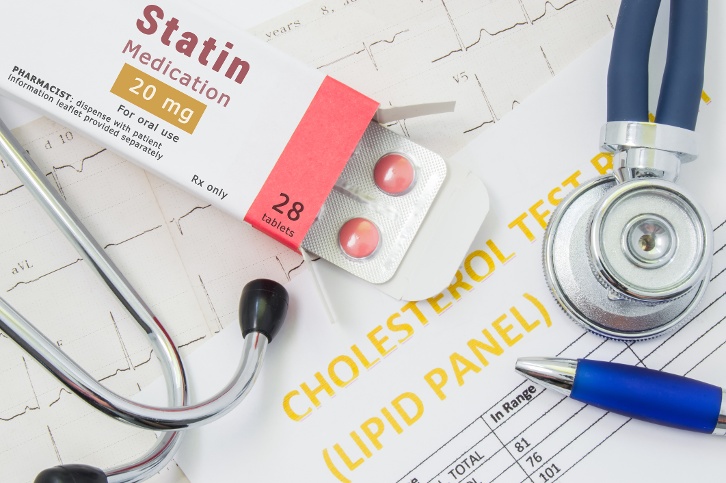
If you’re one of the 29 million American adults living with high cholesterol, you may be wondering what steps to take to reduce these levels and live a healthier life. While cholesterol is necessary for some important functions in your body, consuming too much of it can have many harmful side effects. Having high cholesterol levels, specifically low-density lipoprotein (LDL) cholesterol, can put you at risk for health complications and diseases, such as coronary heart disease, stroke, peripheral vascular disease and diabetes. Fortunately, there are lifestyle changes you can make to reduce LDL cholesterol and take control of your health.
What is LDL Cholesterol?
When most people hear the word “cholesterol” their minds typically think it’s a harmful substance found in fatty-rich foods. The truth is, your body needs cholesterol to function; cholesterol helps your body create certain hormones, vitamin D and aids in the digestive process. Your liver creates LDL cholesterol necessary to complete these important bodily functions so consuming foods with this type of cholesterol should be limited.
Low-density lipoprotein (LDL) cholesterol also known as “the bad cholesterol” can accumulate in your arteries, creating a plaque that causes your arteries to narrow. This is how eating foods high in cholesterol can increase your risk for heart attacks, stroke and peripheral artery disease.
If you are living with high cholesterol, you may have no signs or symptoms. Your healthcare provider can administer a simple blood test to check for cholesterol levels. It is recommended to test your cholesterol levels every four to six years. If you already have high cholesterol or it runs in your family, your healthcare provider may want to check it more frequently.
How to Reduce LDL Cholesterol
When it comes to LDL cholesterol, the lower, the better. Cholesterol guidelines for healthy U.S. adults are:
- – Less than 100 milligrams per deciliter (mg/dL): Optimal
- – 100-129 mg/dL: Near or above optimal
- – 130-159 mg/dL: Borderline high
- – 160-189 mg/dL: High
- – 190 mg/dL and above: Very high
Eat a Heart-Healthy Diet
Saturated fat, foods high in cholesterol and simple carbs should all be strictly limited if trying to reduce your LDL cholesterol levels. Foods high in saturated fat include fried foods, cream, butter, cheese and dairy products that are made from whole or 2% milk. Fatty meat, such as beef, lamb, pork and poultry with skin is also high in saturated fats and should be limited. The American Heart Association recommends consuming less than 5-6% of your daily calories from saturated fat.
Eating a heart-healthy diet packed with fruits, vegetables, low-fat dairy products, whole grains and nuts can help you to reduce LDL cholesterol. Replacing your current eating habits with just a few of these foods could make a big impact on your overall cholesterol levels.
Eating soluble fiber can also help reduce LDL cholesterol. Among other beneficial side effects for your body, soluble fiber is also good for the probiotics, or healthy bacteria, in your body. Probiotics help your body reduce LDL cholesterol over time.
Maintain a Healthy Weight
Did you know that being overweight can raise your LDL cholesterol levels? Being overweight or obese can actually alter the way your body manages cholesterol. If you are overweight, decreasing your intake of cholesterol-rich foods can be less effective at reducing your LDL cholesterol levels. Studies show that being overweight can increase the levels of LDL cholesterol that your liver makes while decreasing the production of HDL cholesterol (the good kind of cholesterol). As you lose weight, your body will start to respond normally to dietary changes. Becoming a healthy weight is an important factor in maintaining normal cholesterol levels.
Talk to your healthcare provider to determine a healthy weight that’s right for you.
Consistently Exercise
Getting the right amount of physical activity can help you maintain a healthy weight and also help raise healthy HDL levels. With your doctor’s okay, adults are recommended to get at least two hours and thirty minutes of moderate to intense exercise each week. It’s important to know that exercise alone does not lower LDL cholesterol levels but increases HDL levels that help regulate the health of your arteries. Exercise, combined with the other lifestyle factors on this list, can reduce harmful LDL cholesterol.
Quit Smoking
Smoking is harmful to your overall health in many ways and can also increase your levels of bad cholesterol while lowering your levels of good cholesterol. It is still not entirely known why smoking can have a negative effect on your cholesterol levels. Fortunately, quitting smoking can have a significantly positive impact on your cholesterol levels and has been shown to improve HDL cholesterol in six weeks.
Work with Your Doctor
If you have certain risk factors for developing high cholesterol or are currently living with a higher than average level, your healthcare provider will work with you to create a plan to reduce the LDL cholesterol in your body. In addition to lifestyle changes, they may also prescribe you a cholesterol-lowering medication, such as statins.
Speak with your primary care physician as they will be happy to help with making recommendations to improve your cholesterol levels and prescribe medication if appropriate.
Looking For a Primary Care Doctor in Connecticut?
PACT Primary Care is Accepting New Patients!
Locations throughout Connecticut in Guilford, Hamden, Madison, Milford, New Haven, Orange, West Haven and Wallingford.
To schedule an appointment, request an appointment online here or call a local center near you.

